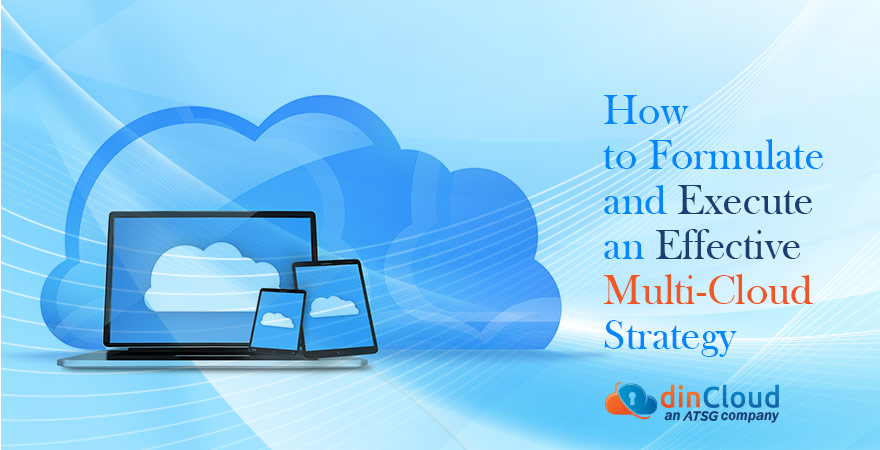If we were to define the current Cloud Computing scenario in two words, those would be “ubiquitous” and “indispensable”. Research states that around 94% of enterprises have already deployed cloud computing solutions, in one form or another.
It is interesting how IT decision makers love to reap the multi-faceted benefits of Cloud Computing technologies, yet they want to avert the risk of vendor lock-ins that might come in their way towards achieving agility and flexibility. Today, businesses no longer rely completely on any one particular Cloud Service Provider (CSP).
Enterprises are increasingly turning to multi-cloud solutions, enabling them to leverage a mix of Private Cloud, Public Cloud and Edge Computing solutions for the optimal utilization of their IT resources.

A few years ago, businesses looked at multi-cloud strategy as something aspirational. Fast-forward to 2022, where numerous businesses have already adopted multi-cloud environments by default. Even this is changing now, as we are witnessing a move from “multi-cloud by default” to “multi-cloud by design”.
What is a Multi-cloud Strategy?
Initially, enterprises did not start off their multi-cloud journeys deliberately. They kept on deploying a “mishmash” of Operating Systems (OS), applications and databases, as their IT environments and needs evolved over time.
Now, enterprises have realized that if they want to leverage “best-of-breed” services of various Cloud Providers in a cost-effective and flexible manner, they should develop intentional and savvier multi-cloud strategies.
In other words, multi-cloud strategy can be defined as a conscious decision of enterprises to use a mix of two or more Cloud Computing services. The ultimate aim is to leverage agility, scalability, flexibility and other features of various Cloud Computing solutions as well as services.
Enterprises can also engage consultants, that can “wave multi-cloud pixie dust” on their IT infrastructures to chalk out the perfect multi-cloud strategy for them. However, when companies undertake this responsibility by themselves, it tends to be a lot more rewarding and productive.
Multi-cloud Strategy – Use Cases
Organizations end up adopting multi-cloud environments, usually because they want to avail a particular solution or service that is being offered by a specific Cloud Provider. This way, they can avail the best Cloud-based solution for each of their workloads, individually.
According to the Chief Technology Officer (CTO) and co-founder of Honeycomb, Charity Majors, multi-cloud environments are harder to implement in practice. The reason for this is because it is difficult to simultaneously keep up with the up-time and “un-holy plumbing” of two or more than two cloud environments.
Having said that, the “perks” of successfully executed multi-cloud strategies include unmatchable reliability, resilience and flexibility. Businesses also opt for multi-cloud environments when they want to avoid vendor lock-in and redundancy issues.
According to a 2022 Flexera State of the Cloud report, around 89% of the surveyed businesses had already deployed multi-cloud environments. Another report by HashiCorp survey 2022, stated that 90% of businesses declared that their multi-cloud architectures were successful.
How to Develop a Successful Multi-Cloud Strategy?
Enterprises should embark on their multi-cloud journey with a lot of due diligence. Otherwise, they might end up further increasing the complexities within their IT environments.
Miles Ward, senior executive at a USA-based tech consulting firm, said that if we take a look at successful companies, like Twitter, Uber and Snapchat, we can see certain similarities. One of them is, they switched from monolithic IT environments to microservices. This gave them a choice to select the best Cloud solution for their IT resources and specific needs.
The following points highlight some tips for creating a successful multi-cloud strategy.
- The first and foremost factor that needs to be considered, before developing a multi-cloud strategy, is to determine the purpose of your multi-cloud deployment.
- Enterprises must adopt best cybersecurity practices (authorization, authentication and network security), on a priority basis.
- Everyone should be assigned clear roles and responsibilities, so that every person can function independently, while staying on course.
- An effective multi-cloud strategy should also reduce friction in the way of creating a new service. Employees should be able to develop personalized services, quickly and easily.
- Cloud-based solutions can either be standard, or very specific for a particular task or workload. Enterprises should evaluate the various aspects of their application infrastructure, to figure out which Cloud solution is apt for which workflow.
- In order to protect data, consolidation and automation should be an integral part of the overall multi-cloud strategy. This will increase the visibility of data across the enterprise, and simplify the complexities of multi-cloud environments.
- Selection of the right CSP is also a critical aspect of any successful multi-cloud strategy. Cloud Service Providers (CSPs), like dinCloud, offer features like flat rate pricing, security, scalability and customization of services. These factors must be kept in mind, while selecting a CSP.
It is not practical for all enterprises to follow the aforementioned methods in totality. They can start off by taking small steps in the right direction, by opting for a Software-as-a-Service (SaaS) provider’s help in the first place. These SaaS providers can simplify your multi-cloud environments. They can also alter your monolithic applications into microservices.
The adoption of Cloud Service Provider’s value-added services, at times, help your enterprise spend more time and energy on increasing productivity, and maximizing value for all key stakeholders.
Conclusion
Businesses that want to leverage “the best of all worlds”, should seriously consider adopting multi-cloud solutions. The ultimate metric for success in a multi-cloud strategy is, whether the enterprise in question is able to deliver the best services to their customers, in a cost-effective and efficient manner.
Despite certain complexities and up-front challenges, enterprises continue to embrace multi-cloud architecture, because it provides them choices, wherever they are needed.
If you are looking to accelerate your digital transformation journey, feel free to contact dinCloud, an ATSG company, which will support your multi-cloud environment in a seamless and cost effective manner.


